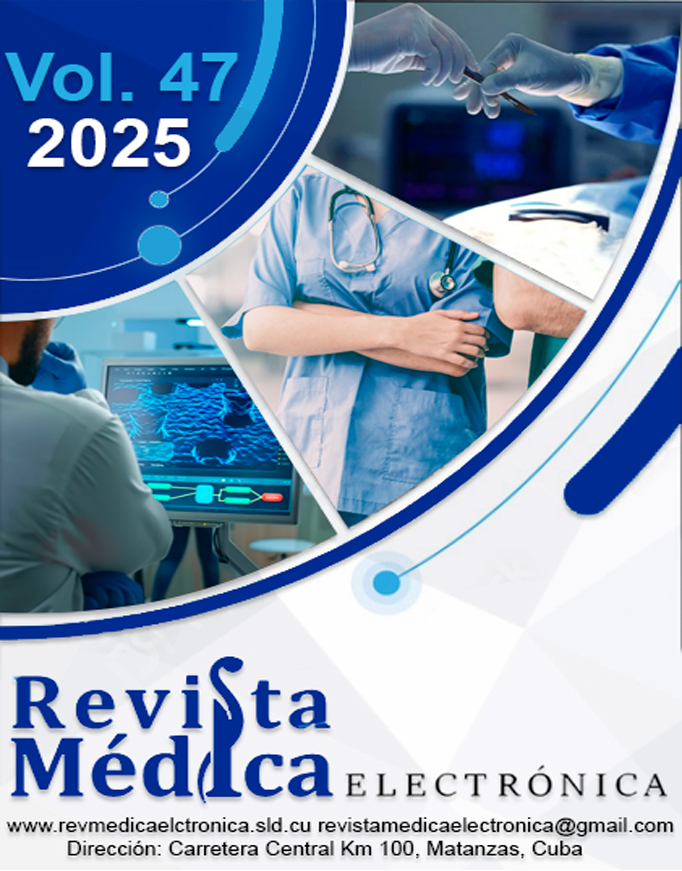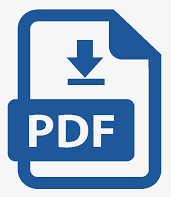Intervención educativa en pacientes hipertensos para mejorar su conocimiento sobre la enfermedad
Palabras clave:
hipertensión; intervenciones breves; intervenciones educativas; HEARTS; técnica de las 5AResumen
Introducción: La salud en Cuba es uno de los temas de mayor importancia para la sociedad, por lo que adquiere significación el control de todo tipo de enfermedades, y dentro de ellas la hipertensión arterial, como una de las que causa mayor morbilidad y mortalidad. Para este tipo de enfermedad se han desarrollado diversas investigaciones y estrategias relacionadas con su control y con la educación de los pacientes.
Objetivo: Mejorar el conocimiento de los pacientes hipertensos sobre hábitos y estilo de vida saludables.
Métodos: La investigación se realizó en pacientes hipertensos del Consultorio no. 41 del Policlínico Docente José Jacinto Milanés, a los que se les realizaron acciones educativas para mejorar el control de la hipertensión, con instrumentos de intervenciones breves educativas mediante la técnica de las 5A. Se emplearon métodos teóricos y empíricos sustentados en la dialéctica materialista. Se definió la variable proceso de educación de los pacientes hipertensos para mejorar el control de su enfermedad, con tres dimensiones y sus indicadores.
Resultados: Tras aplicar un cuestionario para evaluar el estado de la variable, dimensiones e indicadores, se consideran como no logradas. Tras la intervención educativa, se logró transitar hacia la categoría de lograda a la variable y sus dimensiones.
Conclusiones: La aplicación de una intervención educativa breve integrada a la herramienta 5A, permitió mejorar la educación acerca de la enfermedad, los factores de riesgo y estilos de vida inadecuados que inciden de forma negativa sobre ella, así como la actitud ante la adopción de medidas para transformarla.
Descargas
Citas
1. Organización Panamericana de la Salud. Guía técnica cubana de diagnóstico, evaluación y tratamiento para la implementación de la hipertensión arterial. Programa de control de hipertensión arterial en el primer nivel de atención. La Habana: HEARTS en Las Américas; 2022.
2. Sánchez-Delgado JA, Sánchez-Lara NE. Agregación familiar en individuos con hipertensión arterial esencial y factores de riesgo. Finlay [Internet]. 2020 [citado 12/06/2024];10(4):363-70. Disponible en: https://revfinlay.sld.cu/index.php/finlay/article/view/853
3. NCD Risk Factor Collaboration. Worldwide trends in hypertension prevalence and progress in treatment and control from 1990 to 2019: a pooled analysis of 1201 population representative studies with 104 million participants. Lancet. 2021;398(10304):957-80. DOI: 10.1016/S0140-6736(21)01330-1.
4. Pan American Health Organization. HEARTS Paquete técnico para el manejo de las enfermedades cardiovasculares en la atención primaria de salud. Hábitos y estilos de vida saludables: asesoramiento para los pacientes [Internet]. Washington, DC: Pan American Health Organization; 2019 [citado 12/06/2024]. Disponible en: https://iris.paho.org/handle/10665.2/50805
5. Ordunez P, Campbell NRC, DiPette DJ, et al. HEARTS en las Américas: impulsar el cambio en el sistema de salud para mejorar el control de la hipertensión en la población. Rev Panam Salud Pública [Internet]. 2024 [citado 29/01/2025];48. Disponible en: https://iris.paho.org/handle/10665.2/59322
6. Campbell NRC, Khalsa T, Ordunez P, et al. Brief online certification course for measuring blood pressure with an automated blood pressure device. A free new resource to support World Hypertension Day Oct 17, 2020. J Clin Hypertens. 2020;22(10):1754-6. DOI: 10.1111/jch.14017.
7. Ordunez P, Campbell NRC, Giraldo Arcila GP, et al. HEARTS en las Américas: innovaciones para mejorar el manejo de la hipertensión y del riesgo cardiovascular en la atención primaria. Rev Panam Salud Pública. 2022;46:e197. DOI: 10.26633/RPSP.2022.197.
8. Zavala Hoppe AN, Mesia Gamboa JR, Pérez Guerrero SS, et al. Impacto de los factores de estilo de vida en la incidencia de enfermedades cardiovasculares en adultos mayores. BIOSANA [Internet]. 2024 [citado 29/01/2025];4(4):266-78. Disponible en: http://soeici.org/index.php/biosana/article/view/234
9. Hierrezuelo-Rojas N, Álvarez-Cortés J, Monje-Labrada A. Estimación del riesgo cardiovascular en adultos mayores con hipertensión arterial. MEDISAN [Internet]. 2021 [citado 12/06/2024];25(3). Disponible en: https://medisan.sld.cu/index.php/san/article/view/3477
10. Pons Barrera E, Afonso de León JA, Ruau Alderete MC. Control de la hipertensión arterial y la prevención secundaria reduce la cardiopatía isquémica. Objetivo alcanzable. Rev Méd Electrón [Internet]. 2019 [citado 12/06/2024];41(1):232-8. Disponible en: http://scielo.sld.cu/scielo.php?pid=S1684-18242019000100232&script=sci_abstract
11. Berdazco Pintado D, Hernández Montaño A, González Tovar J. Relación de estrés percibido, estrategias de afrontamiento y sintomatología depresiva en pacientes con hipertensión arterial en México. Políticas Sociales Sectoriales [Internet]. 2024 [citado 29/01/2025];2(2):537-74. Disponible en: https://politicassociales.uanl.mx/index.php/pss/article/view/98
12. Ocampo López EJ, Franco Corona MBE. Estrategias de afrontamiento en las personas con enfermedad crónica. Jóvenes Cienc [Internet]. 2018 [citado 12/06/2024];4(1):276-9. Disponible en: https://www.jovenesenlaciencia.ugto.mx/index.php/jovenesenlaciencia/article/view/2363
13. Calvis-González MR, González-Véliz T. Intervención educativa sobre hipertensión arterial en trabajadores con factores de riesgo. Rev Ciencias Médicas [Internet]. 2023 [citado 12/06/2024];27(5). Disponible en: http://scielo.sld.cu/scielo.php?script=sci_arttext&pid=S1561-31942023000600007&lng=es
14. Córdova Angulo MG, Domínguez Criollo MJ. Asociación del conocimiento sobre hipertensión arterial (HTA) y adherencia al tratamiento en pacientes del club de hipertensos del Centro de Salud No 1 del Distrito Chambo-Riobamba 06D01 [tesis en Internet]. Cuenca: Universidad de Cuenca; 2019 [citado 29/01/2025]. Disponible en: https://dspace.ucuenca.edu.ec/handle/123456789/31972
15. Sánchez Villafañes D, Rodríguez González D, Sánchez Reyes DM, et al. Intervención educativa sobre hipertensión arterial en pacientes hipertensos. Rev Inf Cient [Internet]. 2014 [citado 12/06/2024];85(3). Disponible en: http://www.revinfcientifica.sld.cu/index.php/ric/article/view/1125
16. Espinoza Ríos JC. Intervención educativa en el conocimiento preventivo de la hipertensión arterial en los trabajadores de la empresa minera Vicus – Supe. 2019 - 2020 [tesis en Internet]. Huacho: Universidad Nacional José Faustino Sánchez Carrión; 2020 [citado 12/06/2024]. Disponible en: http://hdl.handle.net/20.500.14067/4333
17. Reyes Caballero MC, Menéndez Gálvez L, Obregón Pérez JN, et al. Efectividad de una intervención educativa para modificar conocimientos sobre estilos de vida en pacientes hipertensos. Edumecentro [Internet]. 2021 [citado 29/01/2025];13(1):149-66. Disponible en: https://www.medigraphic.com/cgi-bin/new/resumen.cgi?IDARTICULO=104179
18. Dueñas Rodríguez Y, Rodríguez Puga R, MacDonald Ruano RD, et al. Efectividad de una intervención educativa sobre los factores de riesgo modificables en pacientes hipertensos. Rev cubana cardiol cir cardiovasc [Internet]. 2023 [citado 29/01/2025];29(2):e1409. Disponible en: https://revcardiologia.sld.cu/index.php/revcardiologia/article/view/1409
19. Estrada D, Soriano RM, Jordán AI, et al. Efecto de una intervención educativa repetida frente a una intervención inicial sobre el control de la presión arterial en pacientes hipertensos. Med Clín [Internet]. 2022 [citado 12/06/2024];158(9):406-12. Disponible en: https://www.sciencedirect.com/science/article/abs/pii/S0025775321003936?via%3Dihub
Publicado
Cómo citar
Número
Sección
Licencia
Derechos de autor 2025 Revista Médica Electrónica

Esta obra está bajo una licencia internacional Creative Commons Atribución-NoComercial 4.0.
La misma permite:
• Copiar y redistribuir el material publicado en cualquier medio o formato.
• Adaptar el contenido.
Esto se realizará bajo los siguientes términos:
• Atribuir los créditos de los autores e indicar si se realizaron cambios, en cuyo caso debe ser de forma razonable.
• Uso no comercial.
• Reconocer la revista donde se publica.
Se mantienen los derechos de autoría de cada artículo, sin restricciones.







